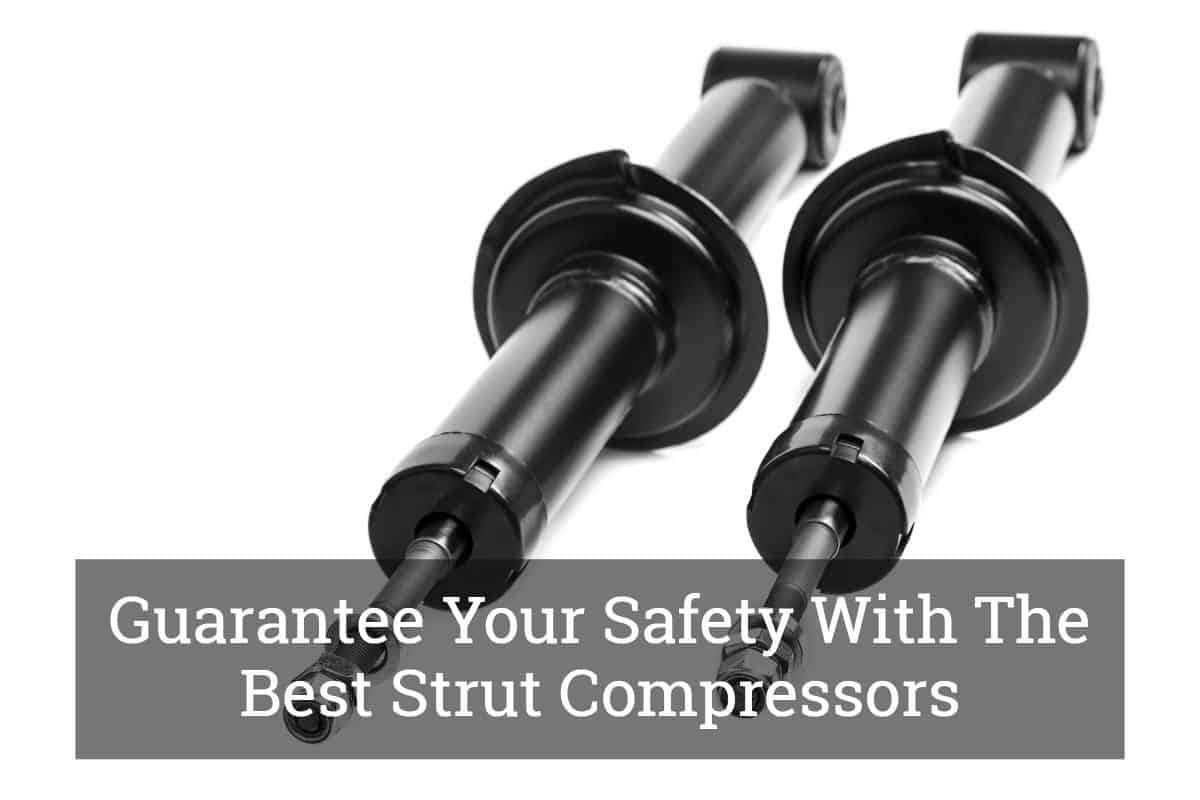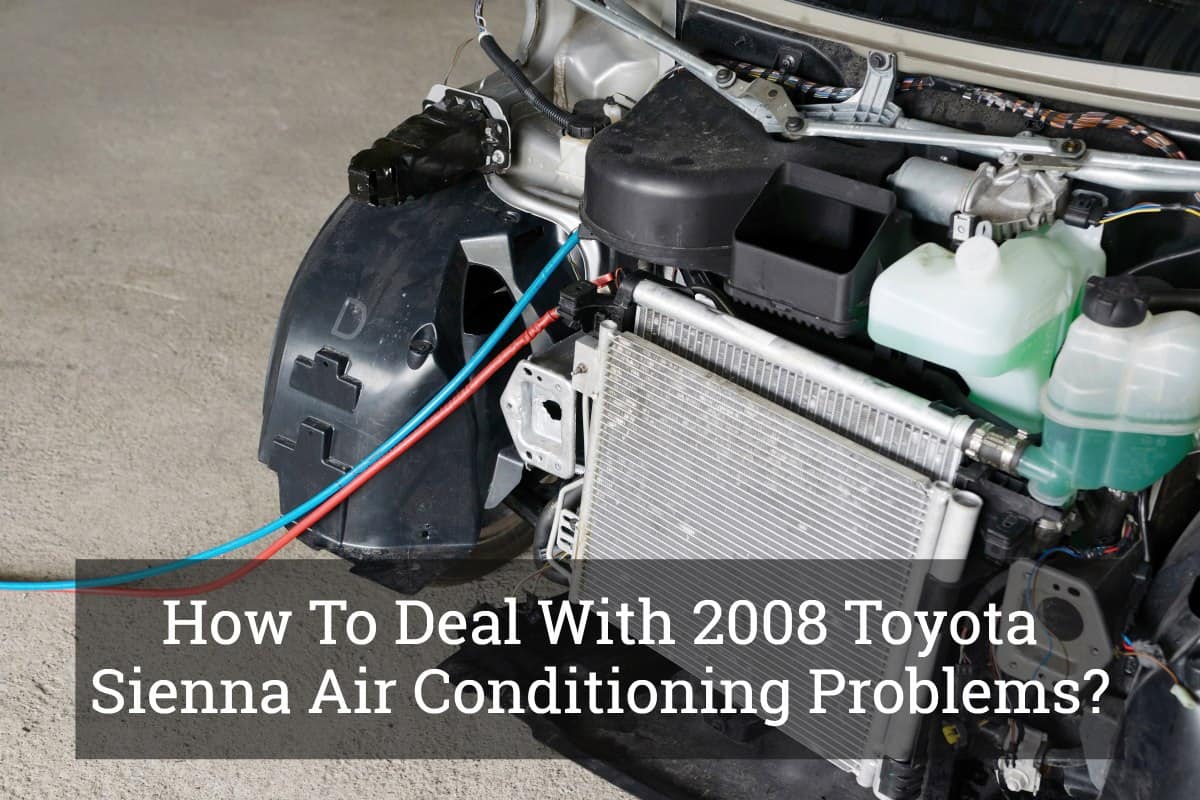(Revising) How To Do Spray Painting In Cold Weather?
Many people are learning to spray paint nowadays. For some, it’s a hobby, while for others, it’s a way of saving some money.
Spray painting isn’t a hard job, but spray painting in cold weather might turn into a disaster, especially when you’re painting the interior of the kitchen cabinet or a car.
To spray paint in the cold, you will need to:
- Try to stay inside an enclosed area with good ventilation. If you are outside in an enclosed tent, make sure that particles don’t come in contact with the drying paint and that the weather is warm enough for the paint for several days.
- Get a cold-rated paint or add an additive to help the paint work properly in the cold.
- Make sure you have a good environment to paint in.
- Check the temperature and weather when painting.
- Plan for the paint to take longer to dry.
- Practice painting in the cold before painting your car.
- Check and prepare the paint surface.
- Check the paint for fluidity.
- Take your time and get it right.
Painting during the winter or in cold weather may be unavoidable. House remodelers try not to work outside in the cold if they can.
Temperature ranges for the cold weather spray painting is usually considered from 35 to 50 degrees Fahrenheit. So, lets find out how to spray paint in this type of weather, the right way?
How to Spray Paint in the Cold Weather?
It’s necessary to understand that how the paint application is affected by low temperatures and how the performance, characteristics, and drying pattern of paint changes.
Painting is affected by cold weather because oil and alkyd based paints have resins and natural oils in them. These paints get more vicious under low temperatures.
Therefore, some paints at the subzero temperatures or in the cold weather become semi-solid or very thick, which might need excessive thinning.
Although, the latex paints do get frozen at the low temperatures, some additives can help thaw them or improve freeze resistance in latex paints.
You can even use the same additives in hot weather to do a painting to make the rolling and brushing process easier.
Latex paints get affected by volatile additives and slower evaporation water rate under low temperatures.
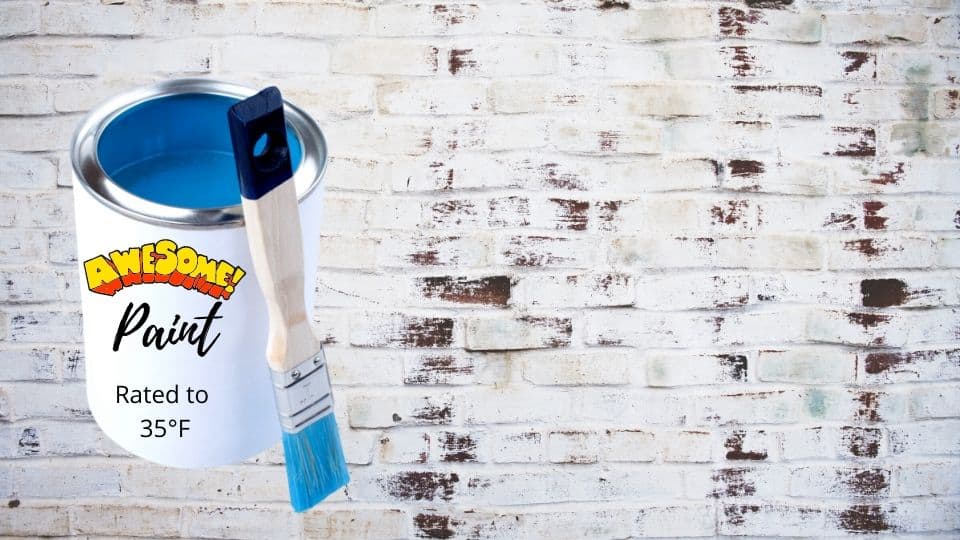
So, if you are considering painting in cold weather check the label of your paint to see if it shows the minimum temperature rating (patch.com). You may not have to add any additives, but if you do, that’s an option as well.
- Start by using a good primer. This helps the paint bond better, or use paint with primer.
- Check the paint temperature rating.
- Check the temperature surface that you’re painting on to be sure it’s the right temperature to paint on. An infrared thermometer gun can work well.
AD
If your painting surface is warm enough, you can paint when it’s cold. It all depends on the paint tempature rating.
- Make sure the surface is free of moisture.
- Use a stiffer paintbrush. Nylon and polyester can work well.
- Remember to take into account weather patterns including: sun, cloud, wind, and rain.
- Determine how many coats you need and how long it will take for the paint to dry in the cold. If the paint is rated 50° and the temperature gets colder the next few day, wait until you have a few day of above 50° weather.
(Credit bullit points: mccormickpaints.com)
Will Your Spray Painting Paint Work Or Not?
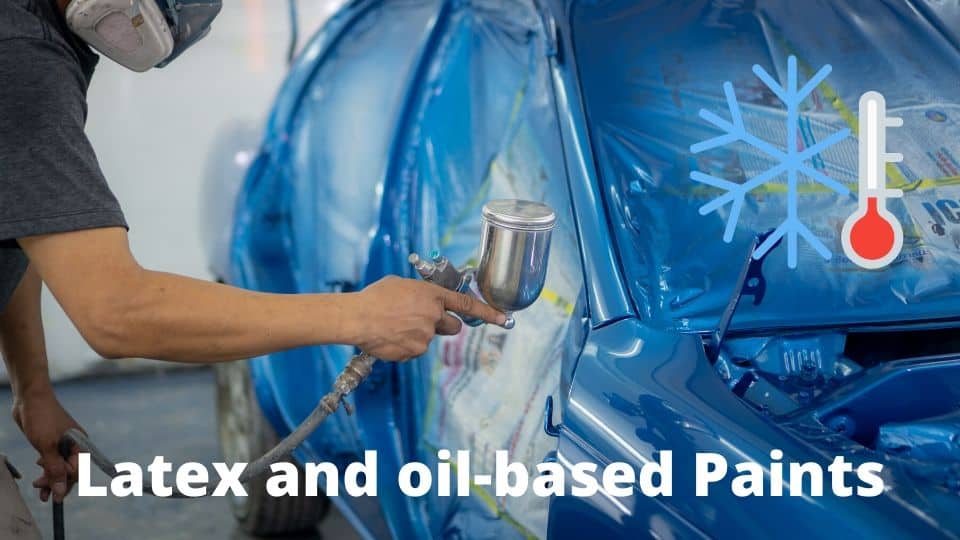
As I explained earlier, latex paints might thicken and freeze, if not treated with an additive.
If your paint has frozen and them thawed out what should you do? Well, in that case if you still need to use this latex paint, you must first check if to see if it has lumps in or not.
If you observe lumps and the paint isn’t smooth, then it’s the sign that the paint is not usable anymore and you must discard it. Manufacturing of latex paints is done in such a way that it can undergo several thaw/freeze cycles, but the moment you find lumps in it, you must discard it.
Compared to latex-based paints, oil-based paints are more resistant, and they usually freeze at lower temperatures.
Do your research and find a paint that is good quality and can work in the weather condition for your area.
Problems While Spray Painting In the Cold Weather
Getting the right paint and the painting in the right temperature are critical to your overall outcome. Painting in the cold weather may bring some of these problems to be aware of:
- Drying period might slow down because of the heavy paint layer
- Color uniformity may be quite poor
- Paints will need more time for mixing
- Water spots, especially in latex paints
- Improper formation of paint layer causes powdery film
- Base coat might look darker than the touch-up coat
- Paint coverage reduced due to excessive building of paint layer
- If the temperature goes below 40 degrees, avoid many oil-based paints
- Paint layer will get thick, and it will cause issues like bubbles/bumps when applied
- Spray gun may not work the way it was supposed to and gets clogged easily
- Runs and drips on the painted surface may be common if you paint in cold weather
Tips for Painting in the Cold Weather
If you’re left with no other option, but to paint in the cold weather, then follow the tips I have mentioned below:
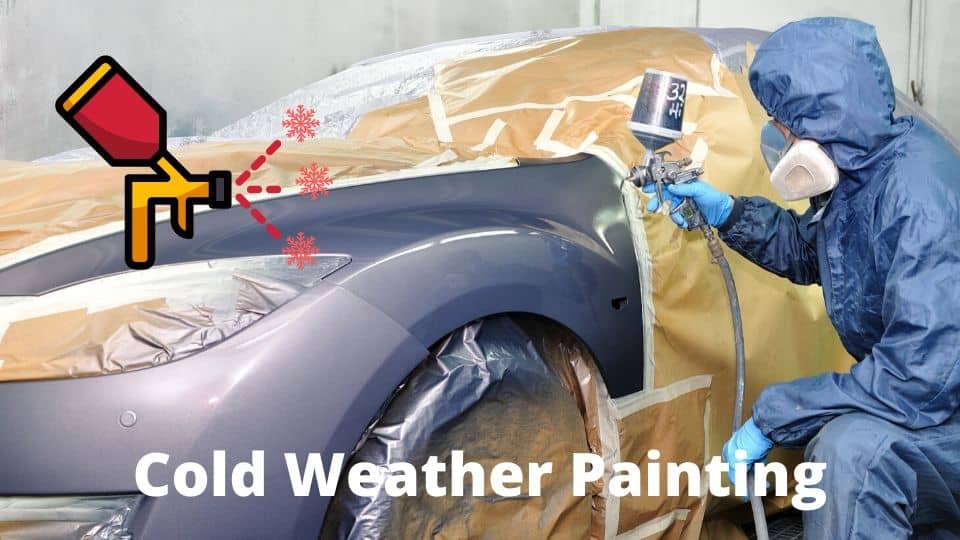
- Make certain that spray gun that you’re going to use is clear because chances are ice might get struck into the gun during the cold weather. Cleaning the gun before will help you avoid problems like jamming or clogging later.
- Make sure the surface of the object you’re going to paint is clean. Any moisture left on the surface will cause problems.
- Scrap away the frost which might be formed on the surface and wipe clean. Look for the moisture. Make certain you look very good. Otherwise, you’ll end up having poor paintwork.
- Don’t forget to follow instructions mentioned in the manual. Many manuals include some guide to painting in the rough weather. So it’s better to check before you start as not every spray paints react same at such low temperatures.
- Protect the object’s surface during coating. While the paint gets dried, you need to make sure that the painted surface is protected till it gets dried completely.
- Keep your eye on the temperature. You must be aware of what you’re dealing with before you begin to paint your car or wall or anything. So it’s better to start with checking the temperature first.
- Don’t forget to inspect your paint before you start. Don’t forget to do the test patch first somewhere.
Possible Bleak Results of Painting in Cold Weather
It may be a good idea to practice painting in cold weather before starting. A bad paint job can be very frustrating a lead you to stop trying. Practicing will give you a chance to get it right under cold conditions.
Here are some of the outcomes which you may get if painting in the cold weather and don’t practice or prepare properly:
- Paint layer is cracking
- Insufficient stain resistance
- Unequal color uniformity
- Poor quality touch up
More Tips for Spray Painting in Cold Weather!
If your car needs to be repainted or you’re planning to add some style to the car, then painting your car wheels can add the stlye you want. You can get it done in a shop, but you can also do it yourself too.

Photo Credit: http://lostworldshow.com/use-car-spray-paint/car-spray-paint-colors/
Before beginning the painting, make certain to:
- Verify that the paint recommended by the paint manufacturer is suitable for your particular temperature.
- Check air temperature as well as the temperature of the car with a non-contact infrared thermometer.
- Turn up the heat to help the paint dry faster.
- Select the right paint and sprayer for a professional job.
- Start painting when the temperature are getting warmer, not colder.
- Set up any scaffolding needed, wrap up everything not to be painted and heat the garage or area if possible.
- Use coatings that are suitable for cold weather and if the temperature goes below 35° F, you may need to wait about two days.
- Use a nice bonding primer before you apply the paint.
Moisture and temperature are the most important part of any paint application. Spray cans are better options to paint compared to the spray guns. The very first thing to keep in mind when doing spray painting at the lower temperatures is that excess moisture, any ice or snow in the air means paint will take more time to get dried.
So, before you start doing spray paint make sure you keep all the above-mentioned aspects in mind, as they will make your painting easier and safer.















